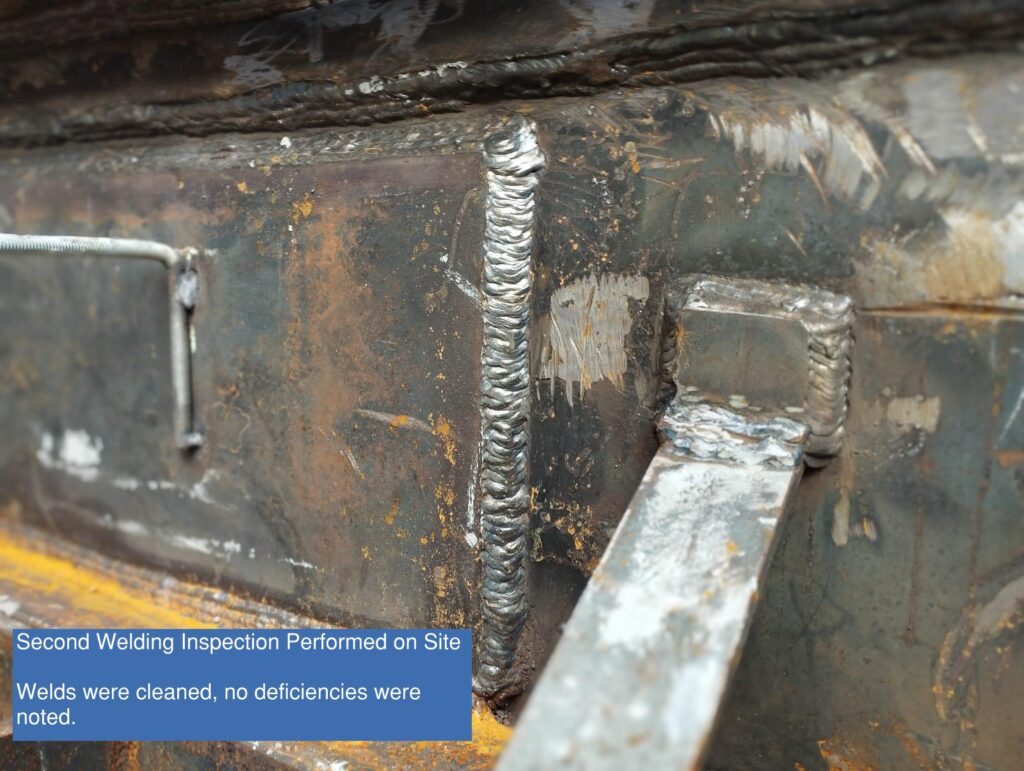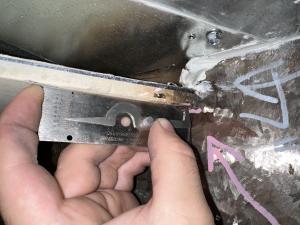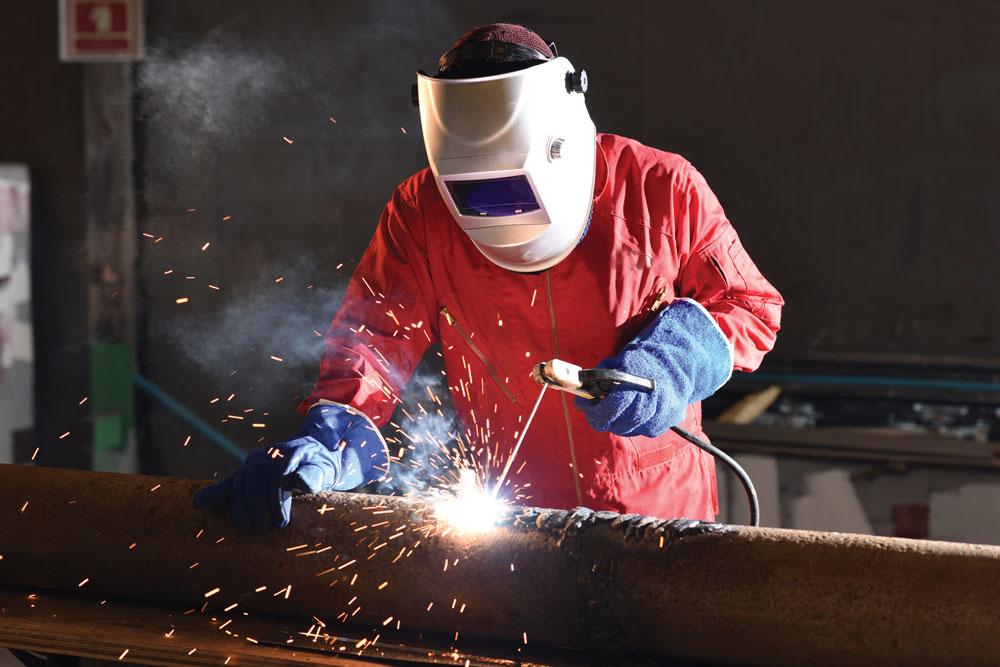Ingenious Techniques to Fillet Weld Assessment and Screening: Enhancing Weld Quality and Compliance Requirements
In the world of welding, the quality and honesty of fillet welds play a critical role in making sure the structural sturdiness and integrity of different industrial parts. With the continuous drive for boosted effectiveness and conformity with strict criteria, the expedition of innovative techniques to fillet weld evaluation and screening has become important. As industries advance, the standard methods might no more suffice in fulfilling the demands of modern welding applications. By accepting sophisticated technologies and methodologies, a brand-new perspective of opportunities emerges in the world of weld top quality analysis and adherence to compliance criteria.
Advanced Non-Destructive Testing Approaches
Using advanced innovations, advanced non-destructive screening methods play an essential duty in making sure the integrity and top quality of fillet welds. These techniques, such as phased range ultrasonic screening (PAUT) and magnetic fragment testing (MPT), deal comprehensive understandings right into the weld's inner structure without causing any type of damage to the product. PAUT, as an example, uses several ultrasonic aspects to evaluate the weld from various angles, supplying a detailed visualization of prospective problems like lack of fusion or cracks.
By utilizing these sophisticated non-destructive screening techniques, weld examiners can properly evaluate the top quality of fillet welds, guaranteeing compliance with market criteria and policies. The capacity to detect imperfections early on not just improves weld top quality however also protects against costly rework or failings in architectural integrity, underscoring the value of these ingenious screening methods in welding examinations.
Robotics and Automation in Examination
The combination of robotics and automation has actually revolutionized the inspection process for fillet welds, improving effectiveness and accuracy in quality assessment. Robotics provide precise control and repeatability in evaluating welds, guaranteeing trusted and constant outcomes. Automated systems can be set to comply with specific inspection paths, making certain comprehensive insurance coverage of welds and lowering the threat of human error.
Robot assessment systems outfitted with sophisticated sensors can find and measure weld functions with high accuracy, giving in-depth information for analysis. These systems can identify flaws such as fractures, lack of blend, and porosity, making it possible for punctual rehabilitative activities to be taken. Furthermore, robotics and automation allow for real-time information collection and evaluation, offering instant feedback to operators and helping with quick decision-making processes.
Moreover, the usage of robotics and automation in fillet weld inspection improves total performance by reducing inspection times and boosting examination throughput. By improving the assessment process, producers can make certain weld high quality and conformity criteria are fulfilled efficiently, inevitably leading to set you back financial savings and boosted item top quality.
Making Use Of Expert System for Analysis
Synthetic intelligence plays a critical duty in boosting the effectiveness and precision of evaluation in fillet weld inspection processes. AI algorithms can swiftly refine substantial quantities of data from weld examinations, spotting problems or incongruities that might be testing to determine with the nude eye - Welding Inspection Racine.
In addition, AI systems can gain from previous assessment data, consistently enhancing their capacity to identify prospective issues and inconsistencies in fillet welds. This flexible understanding capability improves the total quality assurance procedure, decreasing the probability of human error and making certain that welds meet the needed standards. By incorporating man-made intelligence into fillet weld evaluation, markets can attain higher levels of efficiency, consistency, and conformity in their evaluation techniques.
Portable Devices for On-Site Inspection
 Enhancing area assessment efficiency, the fostering of mobile tools reinvents you can try these out on-site evaluation processes for fillet welds. These devices provide adaptability and convenience, permitting assessors to carry out detailed examinations in various areas, consisting of difficult or remote atmospheres. Portable devices such as ultrasonic testing gadgets, magnetic bit inspection devices, and electronic radiography systems offer real-time information and high-resolution imaging capacities, allowing fast decision-making and prompt feedback on weld quality.
Enhancing area assessment efficiency, the fostering of mobile tools reinvents you can try these out on-site evaluation processes for fillet welds. These devices provide adaptability and convenience, permitting assessors to carry out detailed examinations in various areas, consisting of difficult or remote atmospheres. Portable devices such as ultrasonic testing gadgets, magnetic bit inspection devices, and electronic radiography systems offer real-time information and high-resolution imaging capacities, allowing fast decision-making and prompt feedback on weld quality.One significant advantage of portable devices is their capability to streamline evaluation procedures, minimizing downtime and boosting general productivity. Examiners can conveniently transfer these devices to various task websites, eliminating the need for delivering hefty machinery or parts to off-site facilities. Additionally, the portability of these tools promotes cost-effectiveness by lessening transportation expenses and speeding up assessment timelines.
Moreover, making use of portable company website tools for on-site examination advertises aggressive quality assurance procedures, as inspectors can immediately determine and deal with any kind of potential welding defects or disparities. By integrating these ingenious modern technologies right into on-site inspection techniques, welding experts can guarantee conformity with industry requirements and boost weld high quality, ultimately causing boosted architectural honesty and security in various welding applications.
Assimilation of Information Monitoring Equipment
Having optimized on-site evaluation processes through the use of portable tools, the next stage includes the smooth assimilation of information management systems to further improve performance and information evaluation abilities in fillet weld evaluation and screening. Welding Inspection Racine. By incorporating data management systems into the examination procedure, organizations can enhance data collection, storage, and analysis. This assimilation enables real-time surveillance of weld high quality, prompt recognition of problems, and timely decision-making to rectify any kind of problems that may develop throughout the assessment procedure
Information management systems play a vital function in systematizing assessment data, helping with easy accessibility for accredited personnel, and making sure data integrity and safety. Via the combination of these systems, examiners can create comprehensive reports, track historical data for fad analysis, and enhance overall procedure effectiveness. The combination of data monitoring systems makes it possible for smooth communication in between various stakeholders involved in the examination procedure, fostering collaboration and boosting total quality control procedures. Eventually, the combination of information monitoring systems offers to boost the standards of fillet weld inspection click reference and testing, ensuring conformity with sector guidelines and boosting weld top quality.
Final Thought
To conclude, ingenious methods to fillet weld evaluation and testing have substantially improved weld quality and compliance standards. Advanced non-destructive screening approaches, robotics, automation, fabricated intelligence, mobile tools, and data monitoring systems have transformed the way weld evaluations are carried out. By using these modern technologies, industries can guarantee that welds fulfill the required quality requirements and guidelines, inevitably enhancing overall performance and safety and security in welding procedures.

By employing these advanced non-destructive screening techniques, weld examiners can accurately assess the quality of fillet welds, making certain conformity with market standards and guidelines. Mobile devices such as ultrasonic screening tools, magnetic fragment examination devices, and electronic radiography systems offer real-time information and high-resolution imaging capacities, making it possible for quick decision-making and immediate feedback on weld quality.
Having enhanced on-site examination processes through the use of portable tools, the next phase entails the seamless assimilation of information monitoring systems to even more boost performance and information evaluation abilities in fillet weld assessment and screening (Welding Inspection Racine). Eventually, the combination of data monitoring systems offers to elevate the standards of fillet weld evaluation and testing, ensuring conformity with sector guidelines and boosting weld quality
 In verdict, cutting-edge approaches to fillet weld evaluation and testing have actually dramatically boosted weld top quality and compliance criteria.
In verdict, cutting-edge approaches to fillet weld evaluation and testing have actually dramatically boosted weld top quality and compliance criteria.